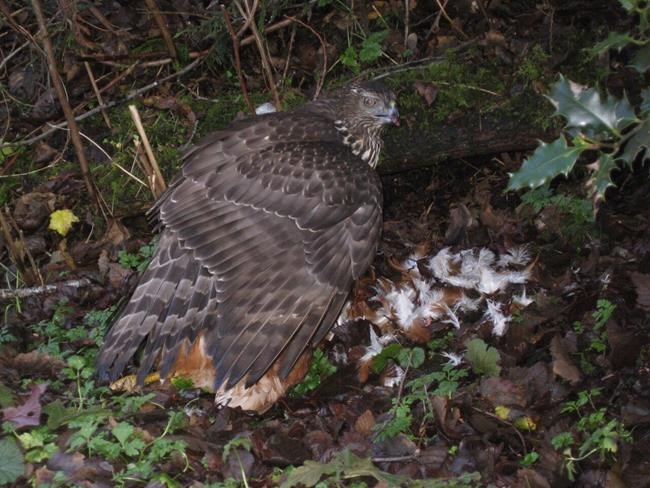Haida Gwaii home to a distinct but vulnerable pocket of northern goshawks
Advertisement
Read this article for free:
or
Already have an account? Log in here »
To continue reading, please subscribe:
Monthly Digital Subscription
$1 per week for 24 weeks*
- Enjoy unlimited reading on winnipegfreepress.com
- Read the E-Edition, our digital replica newspaper
- Access News Break, our award-winning app
- Play interactive puzzles
*Billed as $4.00 plus GST every four weeks. After 24 weeks, price increases to the regular rate of $19.00 plus GST every four weeks. Offer available to new and qualified returning subscribers only. Cancel any time.
Monthly Digital Subscription
$4.75/week*
- Enjoy unlimited reading on winnipegfreepress.com
- Read the E-Edition, our digital replica newspaper
- Access News Break, our award-winning app
- Play interactive puzzles
*Billed as $19 plus GST every four weeks. Cancel any time.
To continue reading, please subscribe:
Add Free Press access to your Brandon Sun subscription for only an additional
$1 for the first 4 weeks*
*Your next subscription payment will increase by $1.00 and you will be charged $16.99 plus GST for four weeks. After four weeks, your payment will increase to $23.99 plus GST every four weeks.
Read unlimited articles for free today:
or
Already have an account? Log in here »
Hey there, time traveller!
This article was published 20/01/2019 (2454 days ago), so information in it may no longer be current.
VANCOUVER – Haida Gwaii’s population of northern goshawks are the last remnant of a highly distinct genetic cluster of the birds, a new study by University of British Columbia researchers has found.
Researchers estimate the population of birds may have been evolving separately on Haida Gwaii for 20,000 years — right around the last time the glaciers melted, causing the sea levels to rise and potentially separating the birds from their kin.
While the birds can fly long distances — with goshawks from Michigan and Manitoba travelling as far away as the central United States — they don’t seem to like travelling over water, which could account for their long-term isolation, said study co-lead Armando Geraldes.

“There don’t seem to be strong geographic barriers anywhere on the continent but then you get that body of water — about 70 kilometres of water between Haida Gwaii and the mainland — and that is apparently is enough to isolate that population,” he said.
Only 50 of the raptors are left on the archipelago.
Their darker colour is a pattern that’s seen in a number of different birds in more humid environments, said the paper’s senior author, Darren Irwin.
“There are a number of theories why that is but we are not really sure why,” he said. “It is a bit of a mystery.”
Geraldes said the goshawks are not only different in the way they look, their genome is quite distinct too.
Irwin said scientists think that the group of goshawks found in Haida Gwaii is genetically adapted to the forest environment where they live.
“The darkness and other traits that we don’t know about … that enables them to live well in that forest.”
Adults are grey and white in colour with golden talons, Irwin said, adding that juveniles are brownish.
They have a strong beak and feed on small mammals and birds, he said.
“They are very good fliers, very fast and very agile and they flash through the forest … turning this way and that way,” Irwin said. “They are used a lot by falconers. They are very charismatic birds.”
Right now Geraldes said goshawks are fighting for space. They nest in large, old-growth forests so one of the concerns is loss of habitat from logging, he said.
Irwin said apart from losing habitat, the birds are also victims of human-animal conflict.
Goshawks hunt chickens and sometimes get caught in wire fencing while at other times they are killed intentionally, he said.
With its small population size, the genomically distinct Haida Gwaii population can be considered to be one of the most endangered organisms on the planet, the study said.
These animals fill an important ecological role as a top predator, Irwin said, adding that their health reflects the health of the forest.
While the population in the archipelago is distinct, these birds are in decline everywhere, and are listed as threatened. Geraldes said it is important to save the animals to preserve the genetic variability.
“Because once you lose it, you’ll never regain it,” he said. “Imagine if there’s a very bad winter and they don’t survive.”
Irwin said maybe someday other goshawks will get to the islands, but evidence suggests new arrivals may not fare as well as the longtime residents.
“To get something as well adapted as they are might take that long again,” he said. “So we think it’s wise to keep the ones that are there in a healthy state.”

